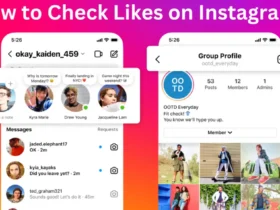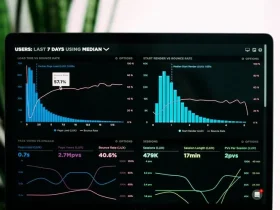Is SEO in Marketing ‘Dead’?
One of the biggest myths surrounding search engine optimization (SEO) is that ROI is hard to come by. SEO is forever evolving, and it’s one of the best digital marketing strategies to pair with paid campaigns. Learn three ways to leverage SEO in the pivoting digital marketing world.
1. Create a Diverse Backlink Portfolio
Any great SEO agency will tell you that ignoring the need for backlinks is a big mistake. Even in 2021, links are extremely vital to your overall search engine optimization strategy. Be mindful, however, that you don’t want just any links. Links for the sake of links can wind up being spammy, which can actually hurt your rankings. Meanwhile, links from sites with low domain authority aren’t likely to hurt your rankings, but they’re probably not going to contribute much assistance to your efforts, either. Ideally, you want to earn backlinks from sites with higher domain authority and those which are older and well-established.
Of course, that’s easier said than done in many cases.
As your site grows and lands links from bigger sites, it’ll likely grab links from smaller sites at the same time. This naturally diversifies your link profile, ensuring that it looks natural to the search engines, so your site doesn’t end up getting flagged for review when the web crawlers visit.
As you work to build and diversify your backlink profile, bear in mind that there are some things you can do to follow suit with Google’s expectations:
- Don’t negate the little guys. When you’re promoting your content, it’s great to grab the attention of the heavy hitters, but smaller sites can offer you value, too. They tend to be more responsive and are often niche-specific.
- Be careful when you’re disavowing links. If you deny too many, you can actually do your rankings a huge disservice. Google understands that most sites will inevitably pick up a few problematic backlinks from time to time, and it’s usually pretty good at ignoring them. If you’re too liberal when disavowing, you might actually do more harm than good with links that were helping you, not hurting you.
2. Never Ignore Technical SEO
When most people think of SEO, they think of the keywords and phrases people plug into their search bars when looking for information. Sure, that’s certainly part of it. Still, by nature, search engine optimization means making the search engines happy from a holistic standpoint, and this includes adhering to best practices where technical applications are concerned.
- HTTPS. The “s” in HTTPS stands for secure. This magic letter has been a ranking factor since 2014. If your site isn’t secure (loads with HTTP) or has a mix of secure and unsecured pages, you’ll likely struggle to rank well. If your site is a non-HTTPS version, switch to a secure, encrypted connection to optimize your relationship with the search engines.
- AMP for Mobile. AMP stands for Accelerated Mobile Pages. These pages are lightweight and designed to give users a speedy, more engaging experience when they’re on their mobile devices. The open-source HTML framework makes it easy for you to create web pages that are load quickly and smoothly, enhancing users’ experiences.
- Crawling Software. If you want insights into your site’s technical health, you can purchase SEO crawler programs that work in the same way Google’s own crawlers do. They check your site for necessary improvements and errors like duplicate content, broken links, erroneous titles, and descriptions that aren’t optimized.
3. Fix 404s with URL Redirects
Nobody likes a 404 error. When people land on broken links and pages that don’t go anywhere, it’s a frustrating experience that can lead to immediate disengagement, increasing your bounce rates, and losing credibility with the search engines. It’s in your best interest to fix broken or missing pages, so you’re not turning visitors (and the web crawlers) away from your brand.
You can do this by downloading your backlink profile using an online tool that will highlight 404 errors for you. Once you’ve identified the culprits, you can use an SEO plugin tool to redirect people to active pages. Take care to send them to the next, most relevant page. Otherwise, you’ll still be causing frustration if the users land on content that’s completely different from what they anticipated.
Redirecting broken pages to up-to-date URLs helps boost user experience and retains link juice you’ve accumulated on the pages you’re redirecting from.
To Sum It Up
Yes, SEO is largely based on keywords and phrases that people search for when they need information, but there’s a whole lot more that goes into the game of keeping Google happy. Adhere to best practices to ensure you’re meeting today’s marketing standards. SEO in marketing is certainly alive and well and will likely stay that way for a very long time!








Leave a Reply